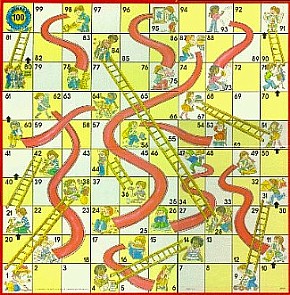2009.02.17 07:58
Bilocation Syndrome
The delegation from India brought along a paradigm of Sanchi.
Augustus saw it and said "I'm to be buried like that."
And he was.
Then full house, hence Hadrian's bust out.
The huntress Diana came from MADxMAD garden to preside over the virtual pool of Nympheum Neronis. "New York is a nice place to visit, but I wouldn't want to live there."
knock knock
who's there?
instead of a telegram, read a novel
but I was expecting Dora Nobb!
Here a Versailles, there a Versailles, everywhere a Versailles, sigh.
You mean like the distance and angle from Hall of Mirrors to Trianon equals the distance and angle from Capitol to White House?
Not exactly. The latter is somewhat magnified.
2003.09.04
a purposeful walk
during the thick of reenactment season
through a space-time continuum
a week later
"I notice within one of the side chapels is the chair used by Pope John Paul II while he was in Philadelphia 1979. Since no one else was around and the railing to the chapel was only 2 feet tall, I decided to go sit in the chair myself. I found those few seconds sitting to be quite intense, so I got up quickly because otherwise I would have gotten way too comfortable."
2009.02.21 18:20
Bilocation Syndrome
Yes, museum as eternal wrest
Otherwise, think of it as

meets

meets

9538
| |
2009.02.21 13:47
Bilocation Syndrome
In 315 AD, the Arch of Trajan was dismantled, moved, redesigned, and rebuilt as the Arch of Constantine
Eutropia: "Just take down the Arch of Trajan, and place it within the new arch."
Helena: "That's perfect, but where do we put the new arch?"
Eutropia: "I say over by the basilica begun by my son."
Helena: "Yes, over by the basilica completed by my son."
Eutropia: "Yes, over by the basilica begun by my son and completed by my son-in-law."
Helena: "Ha! Must you always have the last word?"
Eutropia: "Yes, I confess."
et clement Trajano in Paradiso via Dante
206d
2009.02.24 11:49
pragmatists turning political?
What you describe above relates more to schizophrenic situations, i.e., states characterized by the coexistence of contradictory or incompatible elements, rather than to bilocational situations.
Coexistence and bilocation are not the same thing.
Schizophrenia is a whole split.
Bilocation is two of the same whole.
2009.02.24 20:38
pragmatists turning political?
before things get too carried away here...
bilocation
bilocation
"bilocation as it is, however, accepts the disordered, or varied, virtual. its a baroque and complex intertwining of narratives, myths, of the foundation of logic even prior to logic itself..."
Gosh, that sounds just like Quondam.
2009.02.25 10:52
Bilocation Syndrome
Did Kahn 'research' St. Catherine de Ricci while designing the Dominican Motherhouse of the Sisters of St. Catherine de Ricci? Who knows? There is a sense of bilocation in the design of the Fisher House, and even earlier in the Fruchter House and the executed Jewish Community Center Day Camp. It's probably just a strange twist of fate that these senses of bilocation came to a maturity within the design of the Dominican Motherhouse of the Sisters of St. Catherine de Ricci.
--[what are]The Odds of Ottopia[?]
4037
4054
4109
4114
2009.02.25 13:12
Re: Recent book
Dictionary of Literary Themes and Motifs (1988)
It describes/explains about 200 themes and gives examples of where they appear throughout literature. E.g., Incubus and Succubus, Jealousy, Labyrinth, Lameness, Language, Laughter... So far I read 'Labyrinth' and it's neat how it is both informative and inspiring and gives you leads into other territories to explore.
| |
2009.03.08
journal
Started the process of coordinating the Philadelphia model with IQ. Right now the priority is to bring each section up to the level of completeness a la the data existing thus far. This seems to be the right way to go for Quondam because all the various model data of the entire collection will have a three dimensional place. No doubt this will all be a lot of (drone) work, and I hope it will be worth it, as in something worthwhile architecturally will be gained.
But what is this all really about? It does have to do with "using" the museum, and also using history, specifically architectural history.
Other things going on are:
1. reading A Skeleton Key to Finnegans Wake and seeing how it actually does relate to the ICM, (at least to my interpretation of the ICM). I may ultimately have to read all of Bloomer's Architecture and the Text to make sure I just didn't get her point back them just because I just didn't know any better (about Finnegans Wake).
The other interest in Finnegans Wake is because of the labyrinthine "design" and how I now want to understand and manipulate Quondam as a labyrinthine design. My feeling is that Quondam already is a labyrinth and now I just want to understand and design it better.
2. I want to also employ Quondam as an outlet for architectural fiction, and, right now, the theme of Quondam's architecture fiction is Quondam itself and the buildings in its collection are the novel characters. For what it's worth, I just thought of the Houses for Otto as "ancient" ruins where there are foundational remains but nothing else--we don't even really know if they are/were even houses. (And now I'm seeing how this is very much how Piranesi operated within the ICM and the earlier plans.) In any case, the narrative at Quondam derives from the stories that each building or buildings present.
4673
dt12/0100
2009.03.16 11:28
Venturi's Lieb (No. 9) House to be moved (or demolished)
Historical analysis within a space-time continuum is more ongoing productivity and less end-product.
"architectures in the space-time continuum"
architectural history in the space-time continuum
Pergamon, wo bist du?
I'm beginning to wonder which is more immovable, a building or an opinion.
"[This museum should be regarded as a kind of reliquary containing various mementoes symbolizing not only the eternal brother-conflict, but also the military and diplomatic encounters, exchanges and betrayals of recorded history.] An old woman conducts a party through the museum, pointing out relics from the battle career of her hero Wellington, the Iron Duke. There are exhibits under glass and pictures on the walls. A flag, a bullet, a military hat; Duke Wellington on his big white horse; three soldiers crouching in a ditch; a pair of Naopeon's jinnies, making believe to read a book of strategy; and a sex-caliber telescope through which the Duke trains on the flanks of the jinnies."
JC&HMR
2009.03.22
bilocation, etc.
I occurred to me last night that active participation within an online forum is like a degree short of actual bilocation. It's the speed of light involved that brings the degree of separation down to the minimum. I wonder if bilocation will be recognized as a part of network culture.
Read about half of Heidegger's "The Thing" last night. A few pages in, Heidegger's writing started to remind me of Gertrude Stein's writing.
Found out on 2009.03.20 that the base of the Eiffel Tower is just slightly larger than the base of Hadrian's Tomb. Thus directly over Hadrian's tomb is the Eiffel Tower's position within Ichnographia Quondam.
| |
| |
|